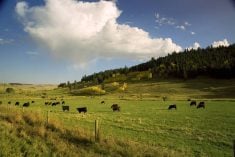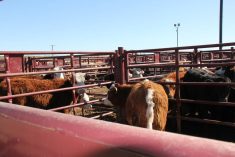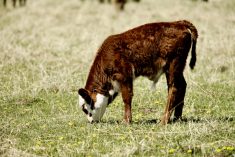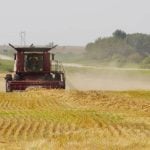A career spent in the cattle industry, specifically that of purebred Herefords, led to a recent induction in the Canadian Hereford Honour Roll for Don and Diane Guilford of Clearwater, Man. The list of accolades and contributions the couple have made to the Hereford industry, the livestock industry, their local community and agriculture in general is significant.
Don Guilford grew up on the farm and purchased his first purebred Hereford in 1965. He started farming with his father and brother in 1974. Before that, he had gone west to Alberta to work, where he met Diane. In the early ’80s he took his first holistic management course, and he and his wife Diane formed Guilford Hereford Ranch in 1986, with their three daughters.
Guilford is knowledgeable and insightful and has some ideas on profitability and marketing. He challenges us to continually analyze and question what we are doing. Their operation is based on moderate-sized British breed cows. Guilford says that in the industry, cows are getting bigger but weaning weights have not actually changed. According to his calculations, the 1,000 lbs. of extra feed for a cow that is 200 pounds heavier at five cents per pound is $50 extra cost per cow.
Read Also
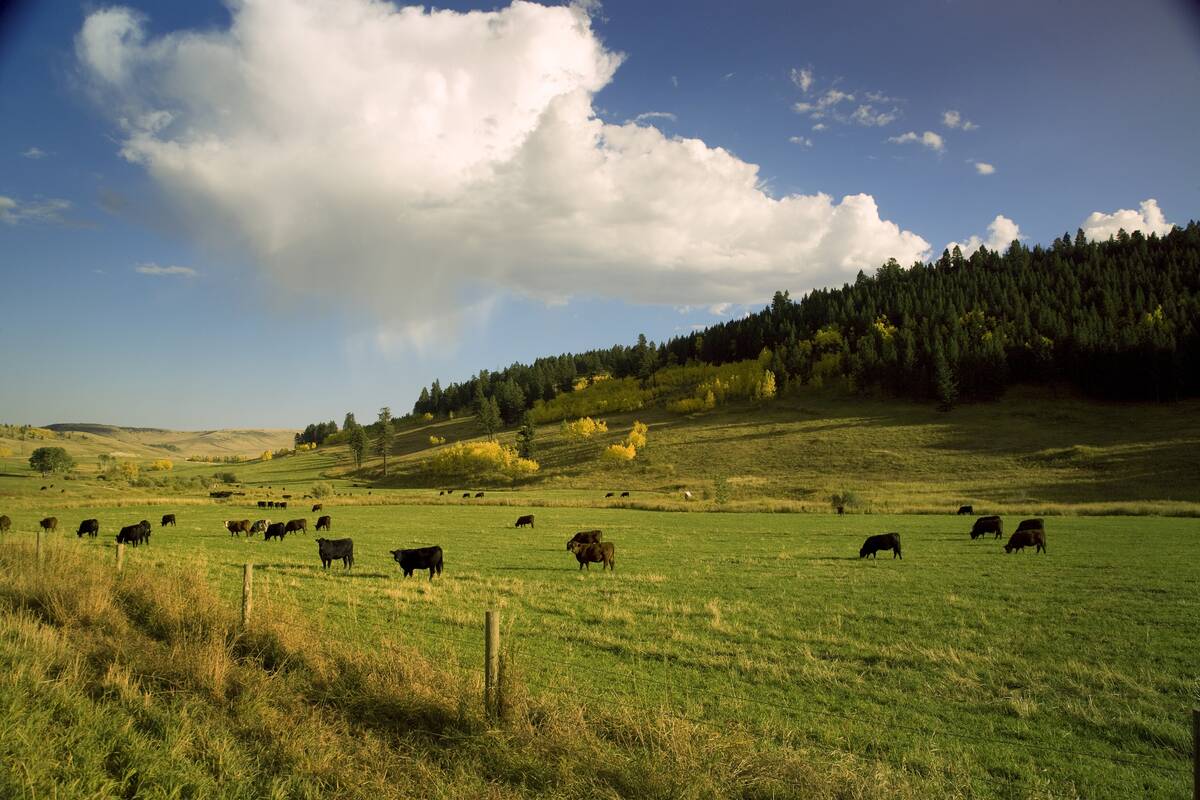
The Canadian Cattle Association’s international advocacy efforts
Global ag policies affect Canadian food policy, so the Canadian Cattle Association participates in international and domestic forums
He speculates that commercial operators could add more to their bottom line by incorporating better crossbreeding strategies. Hybrid vigour can add 15–17 per cent to weaning weights, says Guilford. When prices are in the $4/lb. range, that is significant.
“With a true F1 cow herd bred to a terminal sire the increase is 22 to 23 per cent,” he adds.
Guilford is not shy about sharing his theories. He also cited results from the Douglas Bull Test Station, which he worked with closely for many years, concluding the British breed used six pounds of grain to convert one pound and the exotics required eight pounds per pound of gain. He also says that British breed cows last two years longer in the herd.
“Longevity is so important, and we have not paid attention to it. All we have done with our breeding is getting shorter and shorter.
“Net is what this business is about. We need to know what it costs to get to that sale price. What is your net profit per acre?”
When designing a cow herd, Guilford stresses breeding the right cow for the job. Be clear on objectives and identify your customers. Do you want to be a commercial breeder of terminal cross cattle? Do you want to be an F1 commercial breeder raising replacement heifers? Do you want to be a commercial breeder marketing direct to the consumer? Or do you want to be a purebred breeder? This goes along with many marketing experts who say it is important to define your ideal customer.
He cited an example of three producers he met through the Hereford group where the first producer was selling purebreds to the next who was crossing them with Angus to get F1 Black Baldie heifers. He then sold those heifers to the third guy who was crossing the F1s to a terminal sire. Those transactions continued year after year.
Uniformity and genetic similarity will fetch a premium, says Guilford. “Most big feedlots operate on an all-in, all-out system, where pens of 200 to 500 head will finish at the same time.”
Don’t underestimate the increased value of consistency, he adds. “They (buyers) want peas in a pod and that will get you more money.”
When putting together a marketing strategy Guilford says there is power in numbers. He outlines a sealed bid system, with a specific date and closing time. Enter accurate specifications on the cattle, including weight, type, breed, days on feed or grass and health program. Include when and where cattle and/or trucks will be weighed and how the cattle can be viewed. Stipulate both shrink and sliding scale.
“All the buyer has to do is give you a price per pound,” he says.
This approach has allowed the Guilfords to increase profits. For many years Guilford successfully partnered with a neighbour with similar goals to offer bigger packages of uniform yearling grass cattle following the above concepts. A few days before sale day they would weigh all the animals individually and use that percentage split for the final payout.
Holistic management principles have led Guilford to practice intensive grazing management. “Our goal is to graze nine months of the year, but we are always prepared to feed five if we must. I was pleased when my neighbour asked why I had not grazed a particular pasture and I was able to tell him I had done it twice,” he chuckles.
Fairness, honesty and integrity have always been the basis for all of Guilford’s relationships. The connections are everywhere and touch many aspects of the ag world, from purebred Herefords, commercial cattle, grazing, 4H and on the community level — school, sports and church.
“It does take time to develop these relationships, but that will be time well spent for the extra dollars returned.”
Guilford places high value on continuous learning. “I did not go to university, but I went to every beef and grazing field day, seminar and conference I could possibly get to. And it was not only from the speakers but also from the networking with the fellow participants that I learned so much. The speakers provided the food for thought.”
He valued that practical knowledge. “I wanted to try stuff on my land to see if it would work for me.”
That drive led him to take the holistic management course in the mid ’80s from Alan Savory. “I feel privileged that I got to take that course from Savory himself.”
He chuckles about going on to repeat the course two more times over the years with different instructors — Wayne Berry and Don Campbell. He belonged to the local forage association and often had demonstration sites on his farm. “One year there were seven sites and I think I had five of them.”
His involvement in the Hereford groups started first at the local club level, then to provincial and on to national, with his most recent induction into the Honour Roll. He continues supporting the growth of the industry by mentoring young people. He is excited about attending a Ranching for Profit course. There is no doubt he will generate innovative ideas to apply on his ranch from that course, despite being semi-retired. And he will undoubtedly be sharing those insights with others.



